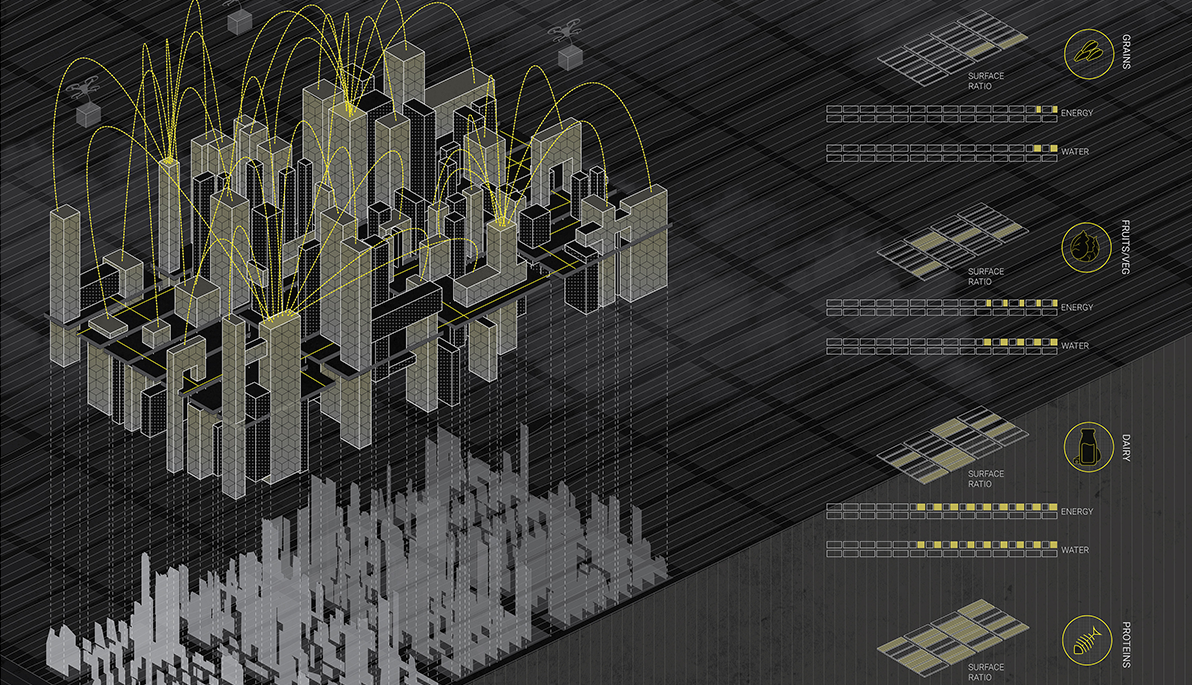News
News Byte: Team From the School of Architecture and Design Proposes Solutions to Food Insecurity
September 27, 2022
Pictured: A production consumption prototype of a self-sufficient block in New York City, featuring a breakdown of food that could be produced, the amount of land needed for farming, as well as water and energy consumption.
Associate Professor and Director of M.S., Architecture, Urban Design Marcella Del Signore and Professor Tom Verebes, Ph.D., in the School of Architecture and Design are showcasing their solutions to food insecurity in New York City at the sixth Tallinn Architecture Biennale in Tallinn, Estonia, running through November 20.
They worked with a team of graduate students in the architecture, urban design program, including Rasika Deosthali, Hitakshi Agrawal, Akshit Kumar, and Gabrielle Soares on the project Visions for a Future Food Deal, in which they propose systems that aim to mitigate the long distance between where food is produced and New York City. The group looked at two locations in midtown Manhattan, including one single Manhattan block and an urban field of 24 Manhattan blocks. They proposed design plans for what it will take to replace food produced in traditional farms—located globally, across the United States, and in New York state—with food production on a large scale in New York City.
The theme of the Tallinn Architecture Biennale, “Edible; Or, The Architecture of Metabolism,” co-curated by Lydia Kallipoliti and Areti Markopoulou, explores architectural strategies of local production and self-sufficiency and operations that use by-products of urban life, replacing the traditional linear systems of “make, use and dispose” with circular systems that aim to limit material and resource loss.




